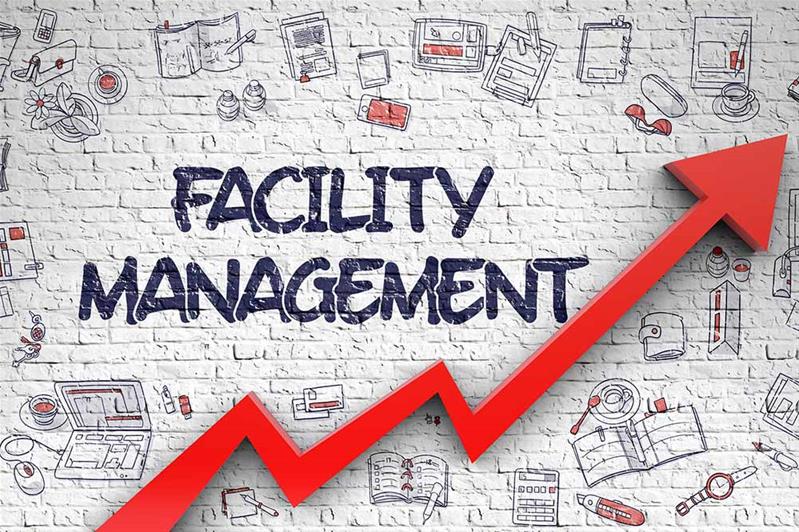Top Benefits of Total Facility Management for Streamlined Workflow
Total Facility Management (TFM) represents a strategic approach to enhancing operational performance by incorporating numerous solutions, such as upkeep and protection, under a unified management structure. This loan consolidation not just decreases redundancies but additionally leverages information analytics for notified decision-making and anticipating maintenance. TFM assists in streamlined interaction amongst stakeholders, lining up operations with more comprehensive business goals. The question continues to be: what certain advantages can companies harness from embracing TFM, and how might these advantages change their operational landscape?
Boosted Operational Effectiveness
Improved functional efficiency is a primary benefit of carrying out total facility management (TFM) strategies. TFM includes a comprehensive approach to handling a center's sources, processes, and framework, inevitably streamlining procedures. By combining various services-- such as maintenance, room, cleansing, and safety management-- TFM improves and decreases redundancies sychronisation among different operational functions.
The assimilation of modern technology more amplifies this effectiveness. Advanced facility management systems supply real-time data analytics, allowing facility supervisors to make informed choices that boost workflow and source allocation. Predictive upkeep techniques, for example, prepare for equipment failures before they occur, reducing downtime and expanding possession life expectancy.
In addition, TFM advertises standardized procedures throughout different divisions, guaranteeing consistency and quality in service delivery. This uniformity lowers operational disruptions and cultivates a more joint working environment. Therefore, employees can concentrate on their core duties, driving efficiency and enhancing total efficiency.

Expense Reduction and Savings
Executing total facility management (TFM) not only enhances operational efficiency but also considerably adds to cost reduction and financial savings. By settling different services under a single management framework, companies can eliminate redundancies and improve processes, thus decreasing operational costs. TFM enables much better procurement approaches, permitting companies to work out bulk getting contracts with distributors and provider, leading to lower costs.
Additionally, TFM emphasizes preventative upkeep, which lessens unanticipated breakdowns and expands the life-span of vital devices. This positive technique not just reduces fixing prices however also improves the dependability of facilitiess, guaranteeing undisturbed procedures. Additionally, energy efficiency initiatives, usually a vital focus of TFM, cause significant cost savings on utility expenses, as facilitiess are optimized for minimized power consumption.
Improved Resource Management
Effective source management is a foundation of total facility management (TFM), making it possible for organizations to maximize using their assets and labor force. By applying TFM approaches, organizations can thoroughly analyze their resource appropriation, making sure that every asset is made use of effectively and efficiently. This holistic method enables for the recognition of underperforming resources and the possibility for reallocation or improvement.
On top of that, TFM promotes the combination of technology for real-time surveillance of sources, which helps in predicting maintenance demands and stopping pricey downtime. By leveraging data analytics, organizations can make educated decisions concerning source implementation, ultimately boosting efficiency and decreasing waste.
Additionally, TFM advertises a society of continual improvement, encouraging groups to regularly Learn More examine and improve their source management techniques. Total Facility Management. This aggressive stance not only decreases operational interruptions yet likewise fosters advancement, as employees are empowered to recommend enhancements based upon their firsthand experiences with source use
Streamlined Communication Networks
In total facility management, streamlined communication channels play an essential role in cultivating partnership and effectiveness across teams. Reliable interaction makes sure that all stakeholders, including facility managers, maintenance staff, and solution suppliers, are straightened with business objectives and functional needs. By establishing clear lines of communication, groups can promptly attend to problems, share updates, and implement solutions, thereby decreasing downtime and enhancing productivity.
With systematized interaction platforms, information is quickly obtainable, permitting for real-time updates on upkeep demands, source allotment, and task timelines. This transparency not just lowers misunderstandings however additionally equips staff members to make educated choices swiftly. Furthermore, structured interaction facilitates much better control throughout emergencies, ensuring that all employees are informed find more and can react promptly.

Boosted Concentrate On Core Activities
A key benefit of total facility management is the increased concentrate on core activities, permitting companies to focus on their key organization objectives - Total Facility Management. By outsourcing non-core functions such as cleansing, protection, and upkeep, firms can redirect their resources and power towards critical efforts that straight add to their competitive advantage and development
Total facility management incorporates different functional tasks under a single umbrella, cultivating performance and lessening redundancy. This loan consolidation not only simplifies processes yet additionally improves liability, making certain that every facet of the facility operates sympathetically without diverting interest from what truly matters-- core business functions.
Moreover, this technique makes it possible for workers to devote their effort and time to tasks that drive innovation and enhance client satisfaction, instead than obtaining bogged down by functional difficulties. With a dependable facility management companion taking care find more of daily operations, companies can achieve better agility, react quickly to market adjustments, and keep a sharper concentrate on their mission.
Eventually, increased concentrate on core activities results in improved overall efficiency, allowing organizations to strengthen their market placement and meet their calculated goals extra effectively. - Total Facility Management
Final Thought
In conclusion, Total Facility Management dramatically improves functional effectiveness by combining essential solutions and leveraging information analytics for notified decision-making. Expense decreases and boosted source management add to total savings, while streamlined interaction networks foster cooperation among stakeholders.
Total Facility Management (TFM) represents a tactical strategy to enhancing functional efficiency by incorporating numerous services, such as upkeep and security, under a unified management structure.Enhanced functional performance is a primary benefit of implementing total facility management (TFM) approaches. Advanced facility management systems give real-time data analytics, enabling facility supervisors to make informed choices that improve operations and resource allocation.Applying total facility management (TFM) not just enhances functional efficiency but additionally significantly contributes to cost reduction and financial savings.Efficient resource management is a foundation of total facility management (TFM), enabling organizations to optimize the use of their assets and workforce.